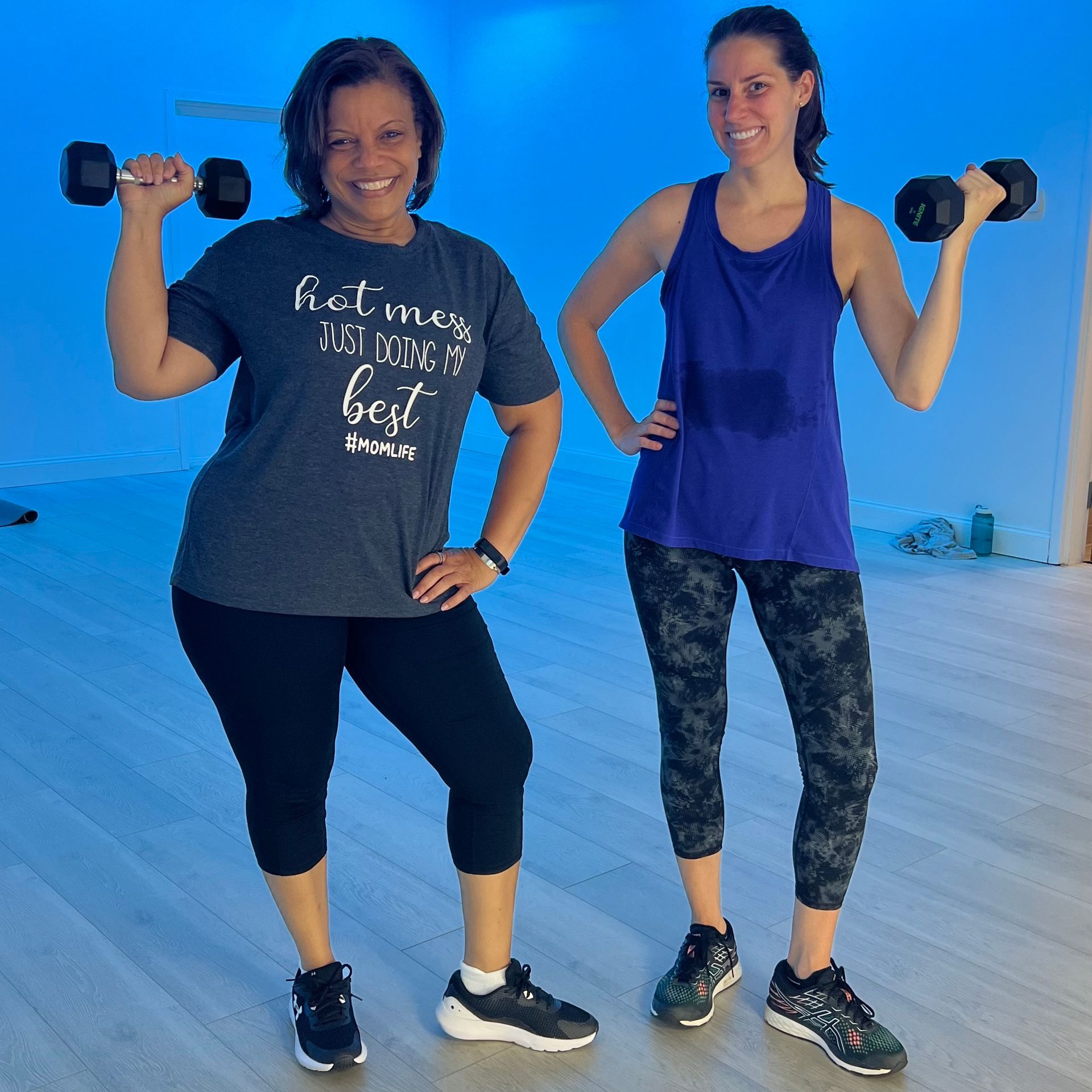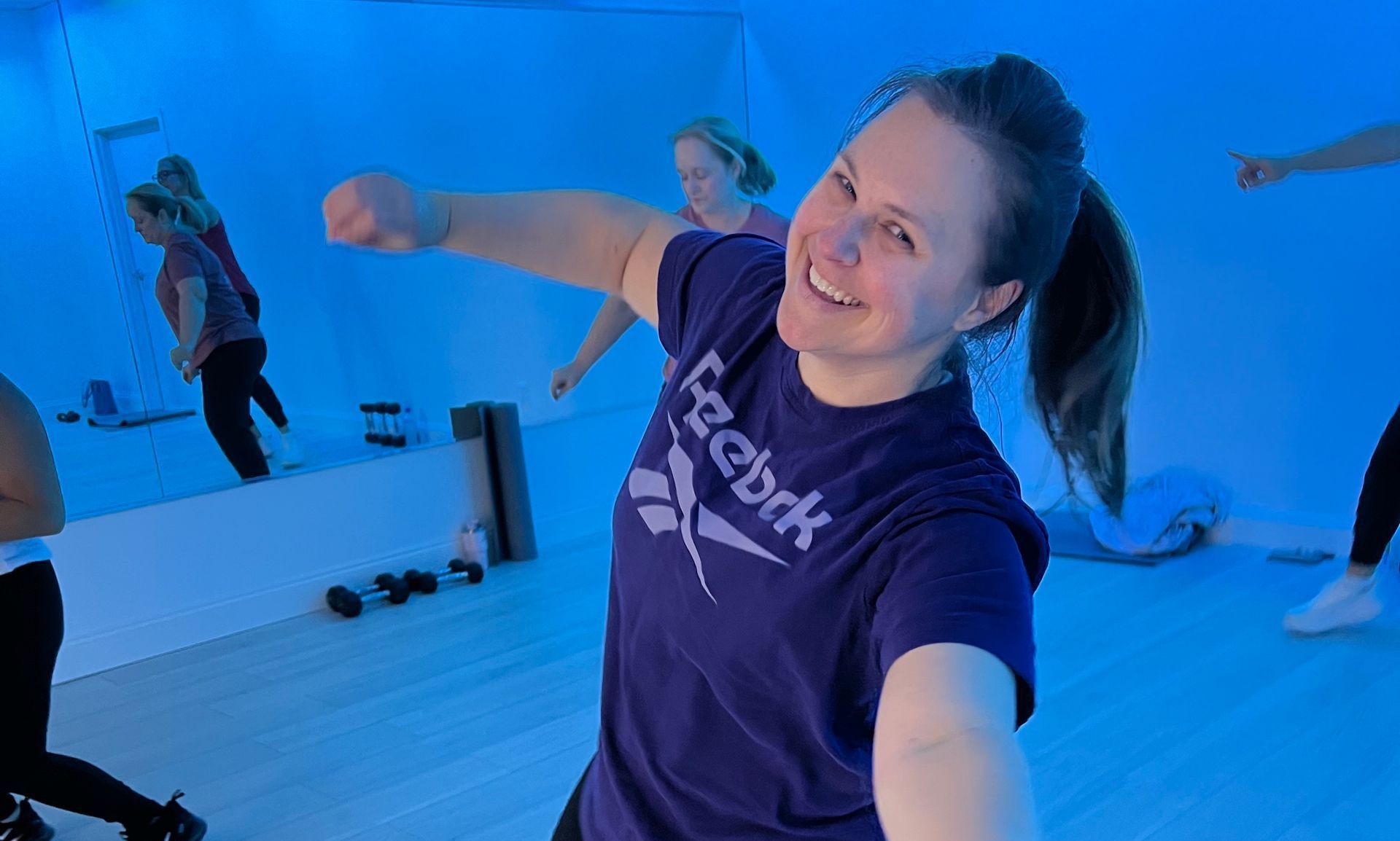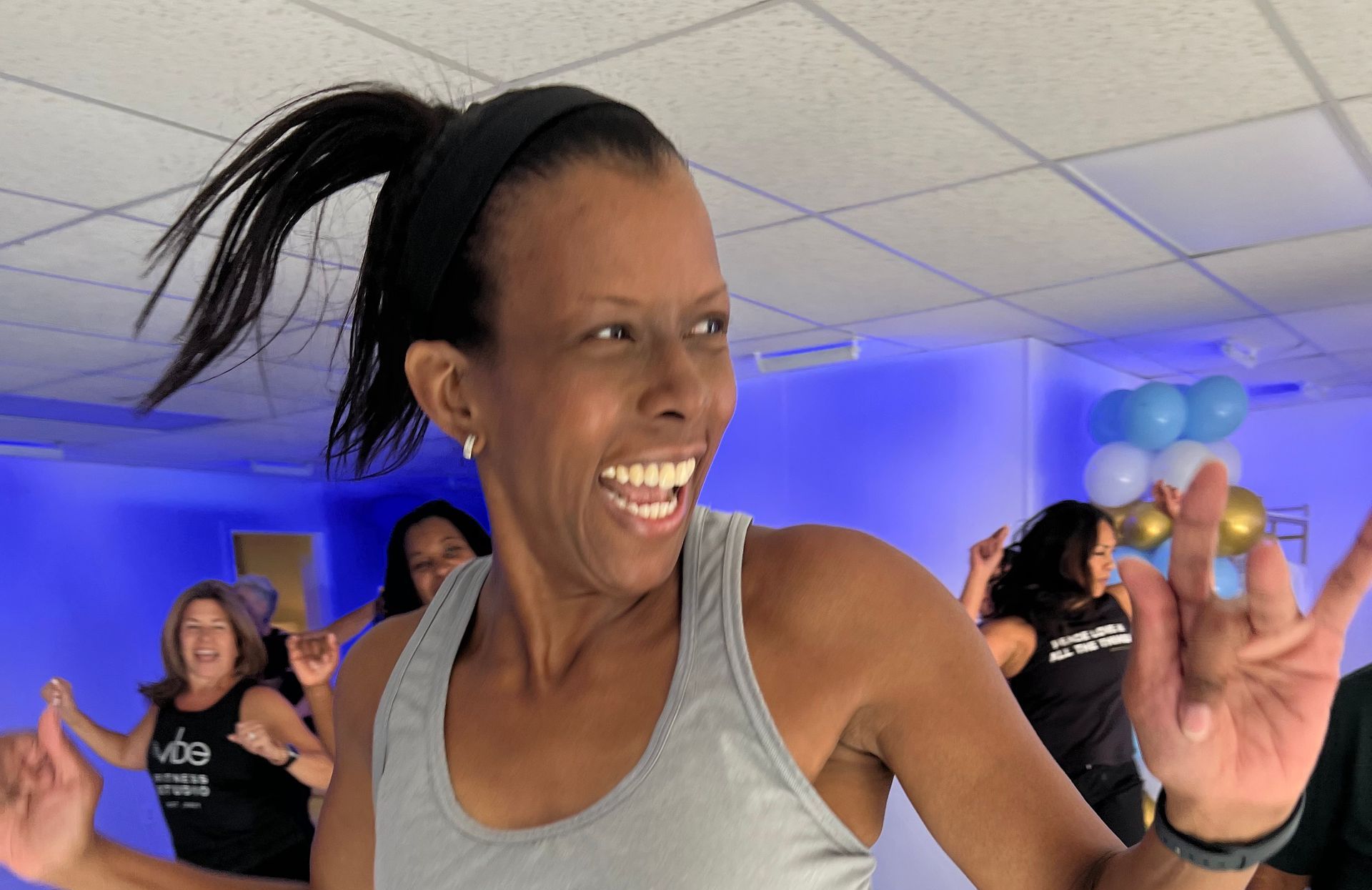Kelly Schur • December 23, 2024
Fitness Lingo 101: Cross-Training Isn’t CrossFit and Other Terms You May Not Know
How to Navigate the Language of Fitness Like a Pro

Ever find yourself scratching your head at some of the terms used in a fitness class? You’re not alone! The fitness world has its own language, and it can be easy to mix up words that sound similar but mean very different things. Today, we’re breaking down some common fitness lingo you might hear in our studio (and yes, we’re throwing in a few dance fitness terms too) so you can walk in feeling confident and ready to move!
Cross-Training vs. CrossFit: They sound alike, but they’re not the same
- Cross-Training is all about mixing up your workouts with different types of exercises to target various muscle groups and keep your body balanced. For example, if you’re a regular in our dance fitness classes, cross-training might look like adding strength training, yoga, or barre to your routine to complement your cardio work.
- CrossFit is a specific brand of high-intensity functional training that combines weightlifting, cardio, and bodyweight exercises in a unique, structured format. It’s typically done in specialized CrossFit gyms, called “boxes,” and follows a distinct methodology. So, while cross-training can be adapted for anyone, CrossFit is its own style of training with a dedicated following.
Dance Fitness Terms: Choreography, Repetition, and Breakdown
- Choreography: This simply refers to the planned dance routine you’ll be learning in class. It’s made up of a sequence of moves set to music, designed to match the beat and mood of the song. Don’t worry if it feels like a lot at first—we break it down into manageable steps so you can learn the moves, one piece at a time.
- Repetition: You’ll notice that many dance fitness routines use repetition, where the same moves are repeated throughout the song. This isn’t just to make it easier to follow along (though that’s a bonus!); it also helps you master the movements and build muscle memory.
- Breakdown: Instructors often use the term “breakdown” to describe the process of teaching the choreography in smaller, easier-to-learn sections. We teach the steps one by one, then gradually put it all together. It’s a great way to learn complex routines without feeling overwhelmed.
DOMS (Delayed Onset Muscle Soreness)
If you’ve ever felt sore a day or two after a tough workout, you’ve experienced DOMS. It stands for Delayed Onset Muscle Soreness, which is just a fancy way of saying your muscles are feeling the effects of a new or challenging workout. It’s completely normal and a sign that your muscles are adapting and getting stronger. To ease the discomfort, try gentle stretching, plenty of hydration, and an active recovery class like yoga or a low-intensity dance session.
Functional Fitness: Training for Real Life
Functional fitness might sound technical, but it’s actually very practical. It refers to exercises that mimic everyday movements, helping you build strength and coordination for real-life activities. Think of squats (similar to sitting and standing), lunges (like stepping forward), and lifts (like picking up your groceries). It’s about training your body to move better in your daily life, making you feel stronger and more capable.
Active Recovery: Rest That’s Not Just Resting
Active recovery is a key part of any balanced fitness routine. Instead of taking a full day off, active recovery involves low-intensity movement like stretching, yoga, or a gentle dance class. It helps keep your blood flowing, reduces muscle stiffness, and speeds up your recovery time. It’s a way to give your body a break without becoming completely sedentary, so you can bounce back faster for your next workout.
Barre, not bar: No Alcohol Served Here
If you’ve heard about barre but aren’t quite sure what it involves, you’re in for a treat. Inspired by ballet, Pilates, and yoga, barre classes focus on small, controlled movements that create a serious burn in your muscles (think tiny pulses that pack a big punch). Don’t worry—you don’t need a dance background to join! The exercises use a ballet barre (or sometimes just a sturdy surface), bodyweight, and small props like light dumbbells or resistance bands. It’s low-impact but super effective for toning, strengthening, and building stability, especially in your legs, glutes, and core. You’ll leave feeling that satisfying shake—proof that those small movements add up to big results!
Mind-Muscle Connection: Feel Every Move
In our classes, you might hear instructors talk about the “mind-muscle connection.” It’s about tuning into the specific muscle you’re working during each exercise and really focusing on that movement. By doing this, you can increase muscle activation and make every rep count. It’s all about being present in your body and feeling the full benefit of each move, whether you’re lifting weights or nailing that dance routine.
Circuit Training: A Full-Body Workout, Fast
Circuit training involves moving through a series of exercises (a circuit) with minimal rest in between. Each exercise targets a different muscle group or type of movement, giving you a balanced, full-body workout in a short amount of time. In our studio, we include bodyweight exercises, strength training and pilates/barre movements in a circuit format to keep your heart rate up and your body challenged.
The world of fitness can be full of unfamiliar terms, but now you’re ready to walk into the studio armed with the knowledge you need. Understanding the lingo helps you get more out of your workouts and makes it easier to follow along and enjoy the experience. So the next time you hear “cross-training,” “functional fitness,” or “choreography breakdown,” you’ll know exactly what we’re talking about. Let’s keep learning, moving, and growing—together! See you in class!

In a world where everything is available at the tap of a button—groceries delivered in an hour, binge-worthy shows ready in seconds, and same-day shipping on just about anything—it’s easy to expect instant results in every area of life. But when it comes to your health, strength, and personal growth, there’s no express checkout lane. You can’t add fitness, confidence, or lifelong wellness to your Instacart and hit “buy now.” . What does work? Consistency. It’s not flashy, it’s not always fun, and yes—it can feel boring at times. But it’s also the most powerful tool you have in reaching your goals. . Consistency in Fitness: It Takes Time Ever see someone crushing push-ups or lifting heavy weights and think, I could never do that? The truth is, they didn’t start there. They showed up, again and again, getting just 1% stronger each time. Whether you’re aiming to lose weight, build muscle, or simply feel better in your own skin, the process is the same: . ✅ One workout at a time adds up to a healthier body. ✅ One pound lost at a time adds up to major transformation. ✅ One rep at a time leads to newfound strength. If your goal is to lose 30 pounds, don’t think about it as one massive goal—think about losing 1 pound, 30 times. It’s about chipping away, bit by bit, until the results reflect the effort you’ve put in. . . Health Isn’t an Instant Purchase—It’s a Daily Choice You can’t buy health in an Amazon Prime order. It’s not a one-and-done decision—it’s a series of choices, made daily: 🥦 Eating whole, nutritious foods instead of processed ones. 🚰 Drinking enough water to fuel your body. 💤 Prioritizing sleep so your body can recover. 🏋️♀️ Moving your body regularly, even when you don’t feel like it. James Clear, in Atomic Habits, says: "You do not rise to the level of your goals. You fall to the level of your systems." That means success isn’t about wanting something—it’s about creating habits that get you there. Your results are built on the small, consistent actions you take every single day. . . Show Up for Yourself—Even When It’s Not Exciting The truth? Consistency isn’t always fun. Some days, you won’t feel like working out, cooking a healthy meal, or skipping the sugar. But those small actions—especially on the days you don’t feel like doing them—are what create long-term change. . So instead of chasing instant gratification, embrace the process. Be okay with the boring. Because the real reward? It’s not just the goal you reach—it’s the stronger, healthier, more resilient person you become along the way. . 💙 What’s one small thing you’re doing consistently that’s making a difference?

So, you've decided to dive into the world of dance fitness, but the idea of learning choreography and keeping up with the moves is a bit daunting. Dance fitness classes can be a fantastic way to get fit, have fun, and improve your dance skills, even if you're starting from scratch. In this blog post, we'll provide you with valuable tips for surviving your first dance fitness class and mastering the art of learning choreography. 1. Dress Comfortably and Wear the Right Shoes First things first, make sure you're dressed appropriately. Choose comfortable workout attire that allows you to move freely. For footwear, go for supportive athletic shoes like cross trainers which allow for multi-directional movement. Running shoes are best used for running. Proper shoes can prevent slipping and support your feet during the energetic dance routines. 2. Arrive Early and Introduce Yourself Arriving a few minutes early to your first class gives you a chance to settle in, find a good spot, and introduce yourself to the instructor and fellow participants. Sharing that you're new can help the instructor provide guidance and ensure you have a positive experience. 3. Embrace the Learning Process Learning choreography can be challenging, especially if you're new to dance. Remember that it's okay to make mistakes. Be patient with yourself and understand that improvement takes time. Most people find that after three to five classes they start to feel successful. Dance fitness classes are all about having fun and getting a great workout, so don't get discouraged if you don't get every move right on the first try. 4. Watch the Instructor During the class, keep your eyes on the instructor. They are your guide and will lead you through the choreography. Pay attention to their movements, cues, and the rhythm of the music. Don't be afraid to ask questions, seek clarification or after class to slowly demonstrate or repeat a section if you need extra practice. 5. Breaking Down the Moves Instructors usually break down the choreography step by step, making it easier for newbies to follow along. Pay close attention to their verbal instructions and visual cues, especially when they demonstrate new or complex moves before the music starts. Look out for movement balance—where the same moves are done on both the right and left sides—and simple repetition, which helps you catch on quickly. Often, you’ll notice movement patterns, like repeating the same steps during the chorus, making it easier to anticipate what’s coming next. 6. Start with Feet First Walking into your first dance fitness class can feel a bit intimidating, especially when it comes to learning the choreography. The key is to start simple: focus on your feet first. Mastering the basic footwork gives you a solid foundation and boosts your confidence before you layer on the arms and extra style. Remember, it’s about having fun, letting the music guide you, and enjoying the process—the fancy moves will come with time! 7. Practice at Home To reinforce what you've learned in class, practice the choreography at home. Review any videos or tutorials provided by the instructor, or simply dance to the music you used in class. Repetition is key to building muscle memory and mastering the moves. 8. Focus on Progress, Not Perfection Remember, everyone starts somewhere. Celebrate the small wins, like nailing a tricky step or simply making it through the class. Each time you show up, you’re getting stronger, more confident, and closer to your goals. 9. Bring a Friend Everything is more fun with a buddy. Invite a friend to join you in your first class - it’s a great way to ease any nerves and make the experience even more enjoyable. You’ll both leave with smiles and stories to share. 10 . Don't Take Yourself Too Seriously Dance fitness classes are meant to be enjoyable. Don't worry about looking perfect or making a mistake. Everyone in the class has been where you are, and the focus is on having a good time while working out. So, let loose, have fun, and dance like nobody's watching! Surviving your first dance fitness class may feel a bit daunting at first, but with the right mindset and these simple tips, you’ll be dancing like a pro in no time. Remember, it’s all about having fun, showing up consistently, and celebrating every bit of progress. So, get ready to groove, sweat, and fall in love with the world of dance fitness!

Are you looking to add some fun and rhythm to your fitness routine? Dance fitness classes can be an incredible way to get your heart rate up while having a blast on the dance floor. However, not all dance fitness classes are created equal. In this blog post, we'll explore what sets our dance class apart from Zumba and other dance fitness classes, offering you a unique and results-driven experience that caters to everyone, regardless of your dance background. Exercise Science and Planned Interval Workouts Imagine your fitness journey as a thrilling roller coaster ride. Club Vibe is designed with this analogy in mind. We incorporate exercise science principles to create a planned interval workout that keeps your heart rate fluctuating, just like the exhilarating highs and lows of a roller coaster ride. This intentional approach maximizes calorie burn, enhances cardiovascular fitness, and boosts metabolism, making each class an efficient and effective workout. Dance with a Purpose for Tangible Results While dancing is undoubtedly fun, we believe in dancing with a purpose. Club Vibe classes are results-driven, meaning that every dance move you make is designed to target specific muscle groups and provide you with tangible fitness results. Whether you're looking to tone your legs, sculpt your core, or improve your overall fitness, our dance class can help you achieve your goals while having a blast. Studio Style Choreography Broken Down and Made Simple Our choreography is inspired by the latest trends in studio-style dance. We understand that not everyone is a professional dancer, so we take pride in breaking down complex choreography into manageable steps. You'll find that our classes are accessible to all skill levels, whether you're a seasoned dancer or stepping onto the dance floor for the first time. Movement Made for Everybody and Every 💙 Body We believe that dance fitness should be inclusive and accommodating to everyone. Our class welcomes all body types, fitness levels, and backgrounds. We emphasize movements that are adaptable to your individual needs, ensuring that every participant feels comfortable and confident while dancing. The Power of a Connected Community for Motivation and Accountability One of the most significant advantages of a Club Vibe class is the sense of community that you'll become a part of. Our participants often find that being surrounded by like-minded individuals who share their fitness goals can be incredibly motivating. You'll form bonds with fellow dancers who can offer encouragement, support, and a sense of accountability, helping you stay committed to your fitness journey. I f you’re considering trying dance fitness, we invite you to experience something truly different. Vibe classes aren’t just about dancing—they’re about getting real fitness results while having a blast every step of the way. With planned interval workouts grounded in exercise science, results-driven choreography, simplified movements for all levels, and an inclusive, supportive community, we offer a unique blend of fun, fitness, and connection. So, if you’re ready to dance your way to a healthier, happier you, join us and discover why our class is unlike any other. We can’t wait to welcome you to the dance floor!

